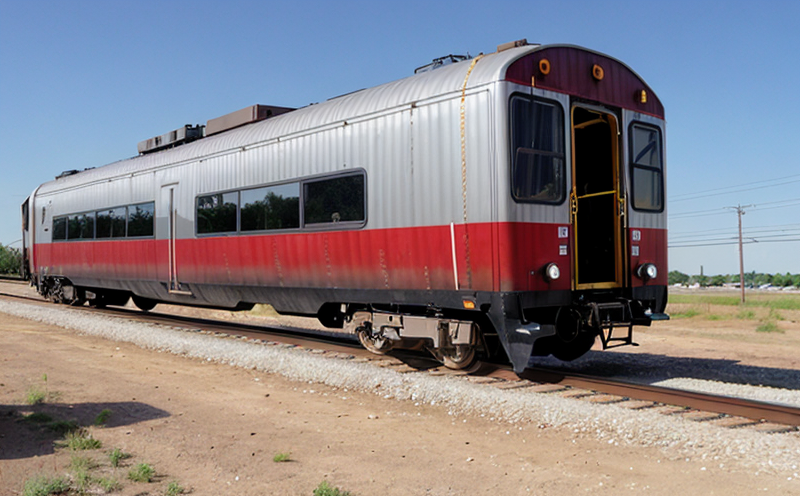Flat railcar inspection
The inspection of flat railcars is a critical process in ensuring the safe and efficient operation of freight transportation systems. Flat railcars are essential components of logistics, facilitating the movement of various cargo such as machinery, construction materials, and general goods across diverse terrains. The primary goal of this inspection is to identify any structural or operational issues that could compromise safety and efficiency.
Flat railcar inspections typically cover several key areas including bogie (truck) assemblies, underframe components, coupler systems, brake equipment, and load-bearing surfaces. Ensuring the integrity of these parts is crucial for maintaining optimal performance and preventing accidents or derailments during transit. Compliance with international standards such as ISO 2634, EN 15085, and ASME codes ensures that inspections are conducted to the highest industry standards.
Before conducting an inspection, it's important to gather detailed information about the railcar, including its age, previous maintenance records, and any reported issues. This data helps in tailoring the inspection process to address specific concerns effectively. The inspection itself can involve a combination of visual inspections, non-destructive testing (NDT) methods like ultrasonic testing and magnetic particle inspection, and load-bearing tests.
The environmental conditions under which these railcars operate also play a significant role in their maintenance requirements. Factors such as temperature variations, humidity levels, and corrosive atmospheres can affect the durability of materials used in construction. Understanding these factors allows for more informed decisions regarding repairs and replacements to extend the lifespan of the railcar.
Quality assurance during inspections involves meticulous documentation of findings and recommendations for corrective actions. Reports generated from these inspections serve as valuable tools not only for immediate operational adjustments but also for long-term strategic planning within transportation networks. By adhering strictly to established protocols, stakeholders can enhance reliability while minimizing downtime and associated costs.
Industry Applications
The application of flat railcar inspection spans across multiple sectors including construction materials handling, manufacturing supply chains, and general freight transport. In the construction sector, efficient movement of heavy equipment like cranes and bulldozers relies heavily on reliable flat railcars.
- Construction Materials Handling: Ensuring that large quantities of sand, gravel, aggregates, and other raw materials are transported safely is paramount to maintaining project timelines. Proper inspection ensures these resources reach their destinations without damage or loss.
- Manufacturing Supply Chains: The timely delivery of components from factories to assembly plants depends on robust railcar systems that can withstand the rigors of long-distance travel.
- General Freight Transport: This encompasses a wide range of products ranging from consumer goods to industrial supplies. Safe and punctual transportation is vital for maintaining customer satisfaction and business continuity.
By leveraging advanced inspection techniques, organizations can optimize their logistics operations by identifying potential bottlenecks early on. This proactive approach enables better resource allocation and reduces disruptions in supply chains, thereby fostering a more resilient infrastructure capable of adapting to changing market demands.
International Acceptance and Recognition
The importance of international acceptance and recognition cannot be overstated when it comes to flat railcar inspections. Compliance with recognized standards such as ISO 9001 for quality management systems, ASME Section VIII for pressure vessels, and EN 15085 for welding in the railway industry ensures that inspections meet stringent regulatory requirements.
International organizations like UIC (Union Internationale des Chemins de Fer) provide guidelines that help harmonize practices across different countries. Adherence to these standards not only promotes consistency but also facilitates seamless interoperability between various transportation networks worldwide.
Countries like the United States, Canada, Europe, and Asia have their own specific regulations governing railcar safety and maintenance. For instance, Federal Railroad Administration (FRA) in the U.S., Canadian National Railways (CN), and European Union directives all emphasize rigorous inspection processes to prevent accidents and ensure compliance with local laws.
Recognition by reputable bodies such as Lloyd's Register, DNV GL, and SGS adds credibility to inspection reports. These organizations conduct audits and certifications that validate the reliability of inspection services offered by laboratories. Such endorsements build trust among clients who rely on accurate assessments for decision-making purposes.
Frequently Asked Questions
Environmental and Sustainability Contributions
- Emissions Reduction: Efficient transportation reduces unnecessary fuel consumption, thereby lowering greenhouse gas emissions. Properly maintained railcars contribute significantly to this goal by operating more economically.
- Risk Management: Preventive maintenance strategies implemented through regular inspections help mitigate risks associated with breakdowns or accidents, which can have adverse environmental impacts.
- Material Optimization: Identifying and replacing worn-out components promptly ensures that resources are used optimally without unnecessary replacement of entire units.
In conclusion, flat railcar inspection plays a vital role in promoting sustainability by enhancing efficiency while minimizing negative ecological footprints. Through strategic interventions, stakeholders can achieve balanced growth that supports both economic prosperity and environmental stewardship.





